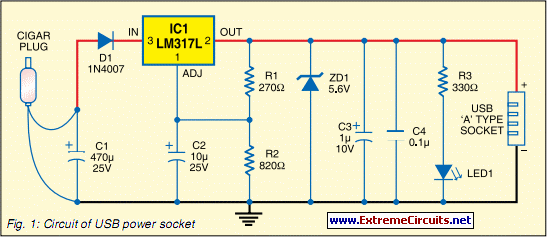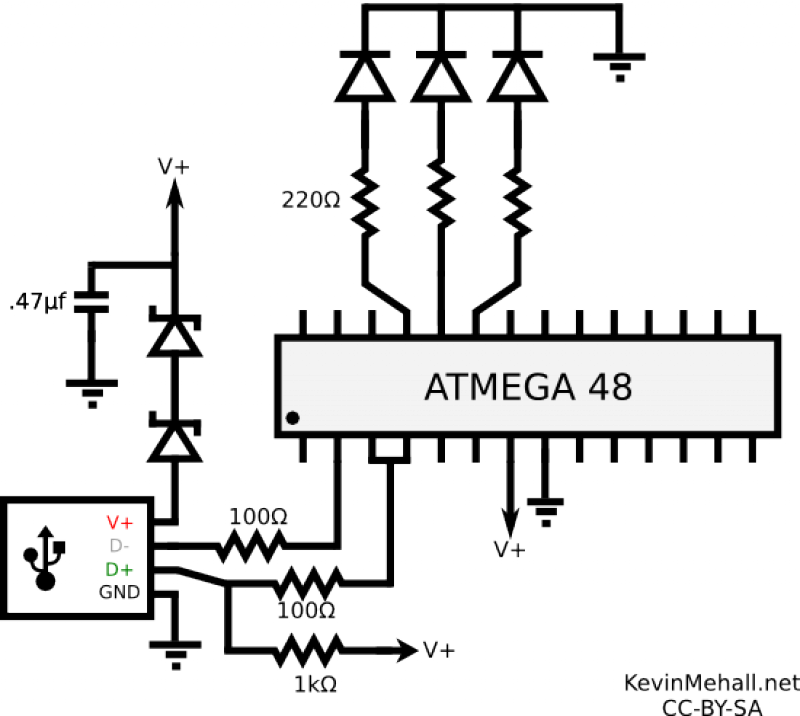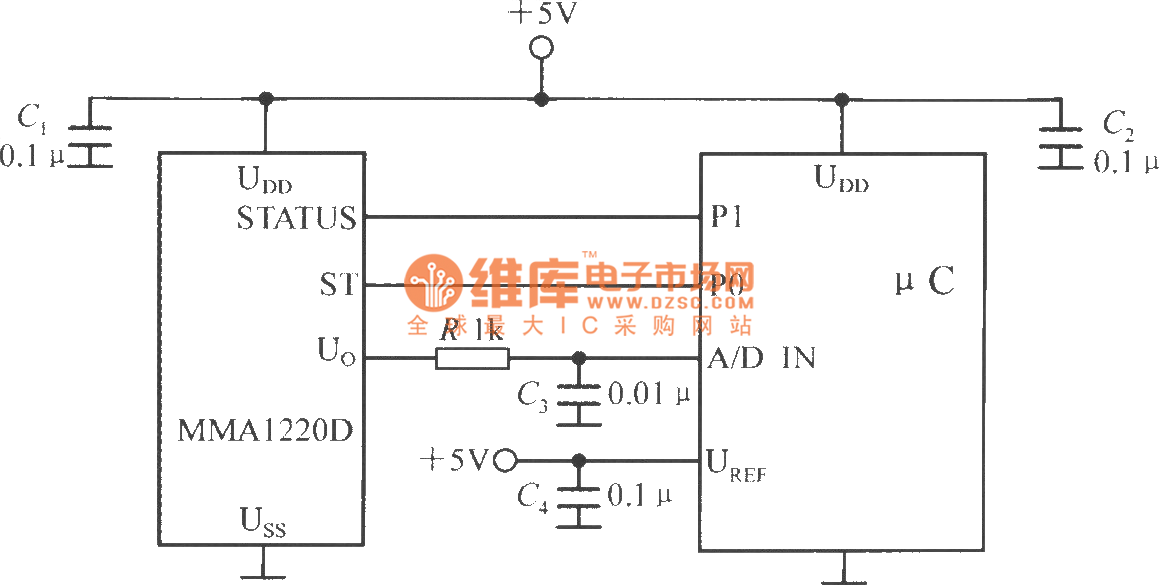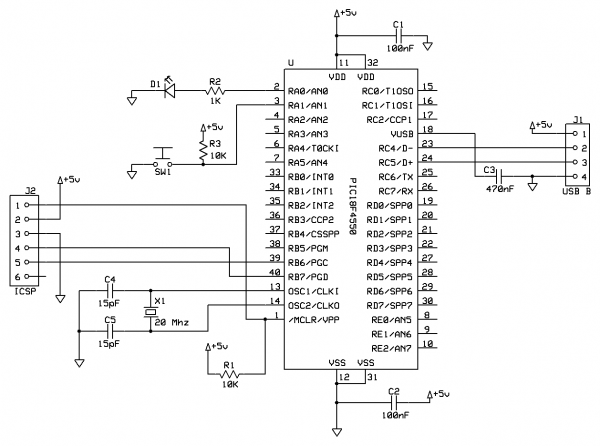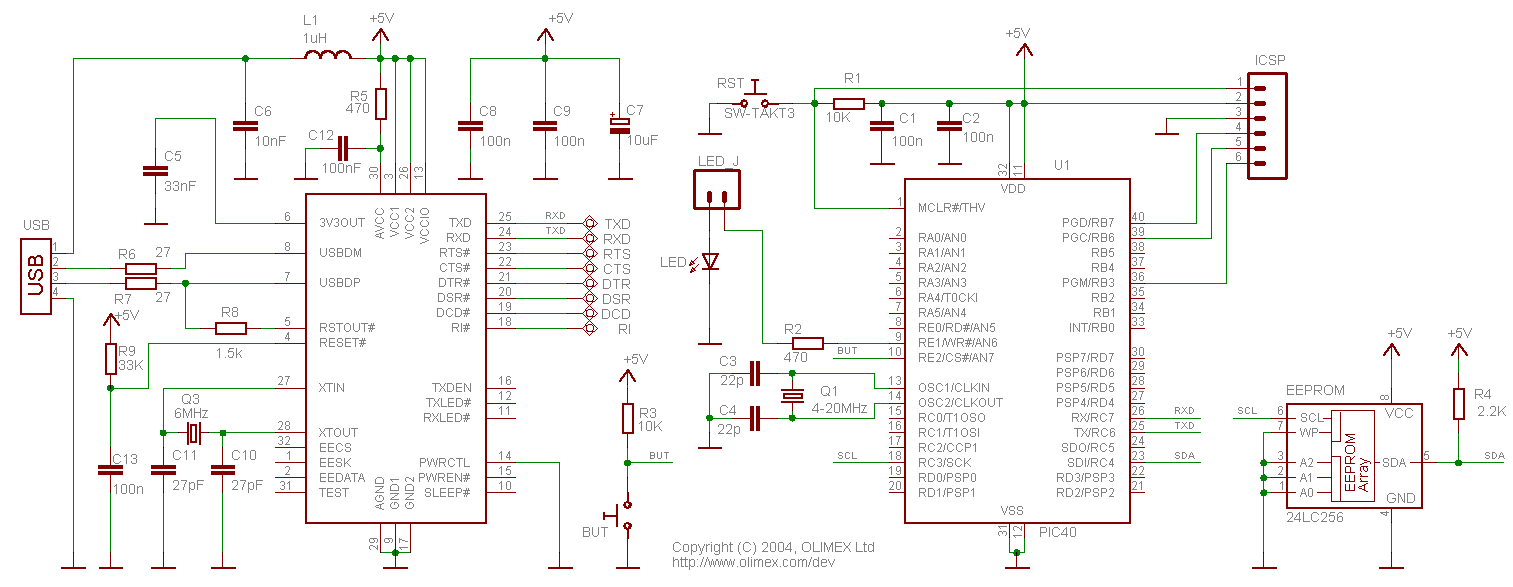
USB 8bit Interface Board
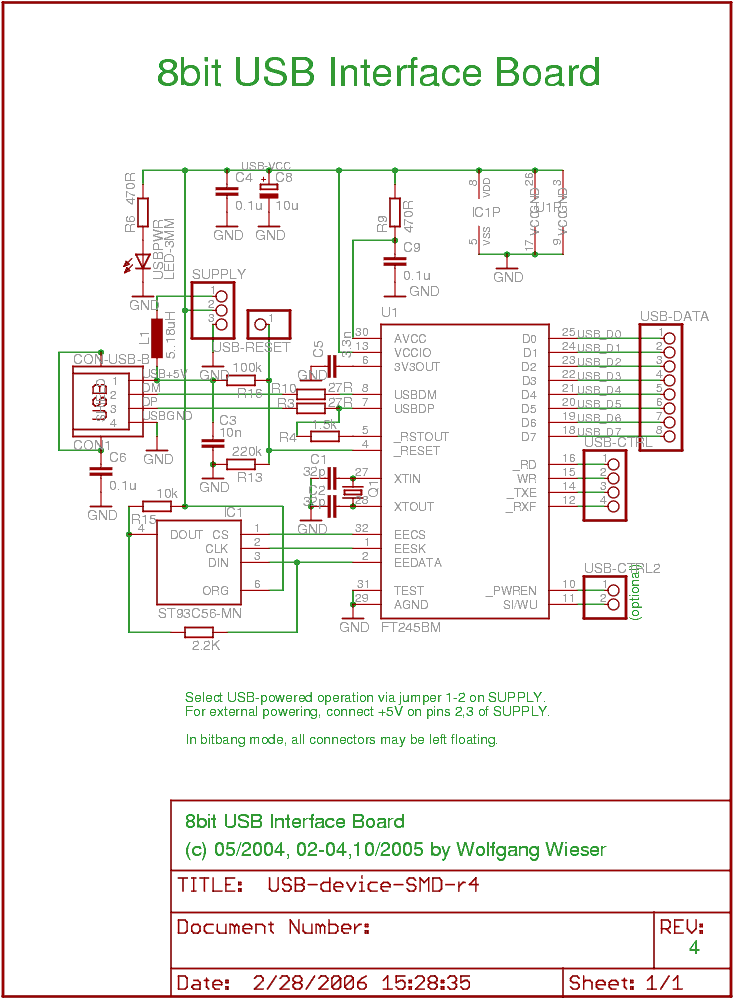
The objective was to create a compact USB interface board that can be easily connected to microcontroller boards. It is designed to support both USB-powered and externally-powered operation. The number of external components has been minimized, although there are still a significant number present. The board can function as a USB-powered device by connecting pins 1 and 2 on the supply pin header, or as an externally-powered device by leaving pin 1 open and applying 5V to pins 2 and 3.
The USB interface board is designed to facilitate seamless integration with microcontroller platforms, providing flexibility in power supply options. The board features a USB connector that allows for direct connection to a USB port, enabling power delivery and data communication. When operating in USB-powered mode, the board draws power from the USB connection, which simplifies the setup and reduces the need for additional power sources.
In externally-powered mode, the design incorporates a power management circuit that allows the board to operate independently of the USB connection. This is particularly useful in applications where the USB interface is not available or where higher power requirements exceed the capabilities of the USB interface. By leaving pin 1 open, the board can receive a stable 5V supply through pins 2 and 3, ensuring reliable operation in various conditions.
The circuit layout is optimized for space efficiency, minimizing the footprint while maintaining functionality. Key components include voltage regulators, capacitors for decoupling, and possibly a microcontroller or interface chip to manage USB communications. The design also includes protection features such as overvoltage and reverse polarity protection to safeguard the board and connected devices.
Overall, this USB interface board serves as a versatile solution for developers and engineers, allowing for easy connectivity and power management in microcontroller applications. The dual power supply capability enhances its usability across different project requirements, making it an essential tool in the electronics toolkit.The goal was to make a small USB interface board which could easily be connected to microcontroller boards. It should support USB-powered as well as externally-powered operation. External components are kept at a minimum (but there are still quite a lot of them). The board may be used as USB-powered device (externally connect pins 1 and 2 on the S UPPLY pin header) and as externally-powered (leave pin 1 open and apply 5V to pins 2 and 3). 🔗 External reference
The USB interface board is designed to facilitate seamless integration with microcontroller platforms, providing flexibility in power supply options. The board features a USB connector that allows for direct connection to a USB port, enabling power delivery and data communication. When operating in USB-powered mode, the board draws power from the USB connection, which simplifies the setup and reduces the need for additional power sources.
In externally-powered mode, the design incorporates a power management circuit that allows the board to operate independently of the USB connection. This is particularly useful in applications where the USB interface is not available or where higher power requirements exceed the capabilities of the USB interface. By leaving pin 1 open, the board can receive a stable 5V supply through pins 2 and 3, ensuring reliable operation in various conditions.
The circuit layout is optimized for space efficiency, minimizing the footprint while maintaining functionality. Key components include voltage regulators, capacitors for decoupling, and possibly a microcontroller or interface chip to manage USB communications. The design also includes protection features such as overvoltage and reverse polarity protection to safeguard the board and connected devices.
Overall, this USB interface board serves as a versatile solution for developers and engineers, allowing for easy connectivity and power management in microcontroller applications. The dual power supply capability enhances its usability across different project requirements, making it an essential tool in the electronics toolkit.The goal was to make a small USB interface board which could easily be connected to microcontroller boards. It should support USB-powered as well as externally-powered operation. External components are kept at a minimum (but there are still quite a lot of them). The board may be used as USB-powered device (externally connect pins 1 and 2 on the S UPPLY pin header) and as externally-powered (leave pin 1 open and apply 5V to pins 2 and 3). 🔗 External reference
